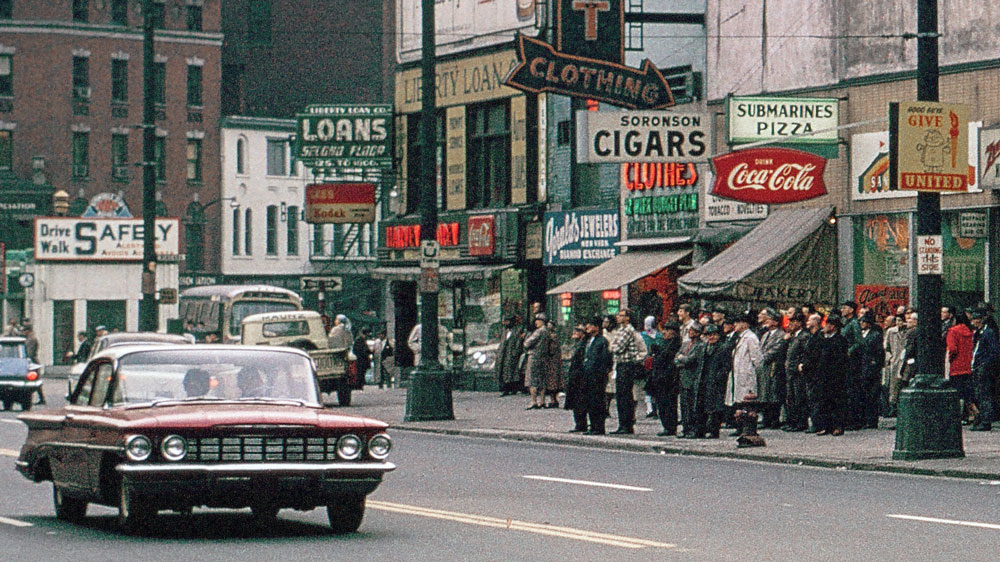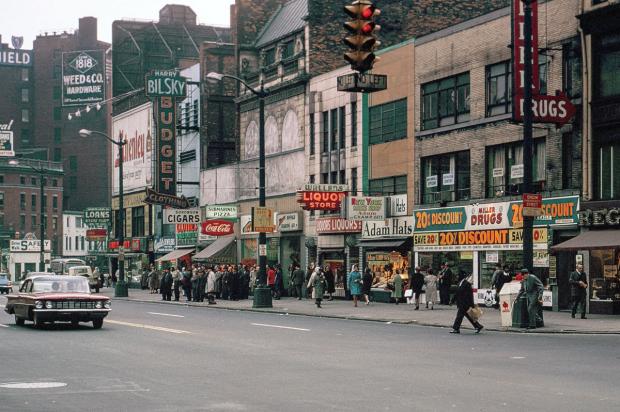Looking Backward: Main and Eagle Streets, 1964
It is 1964, the starting year of an urban renewal project that would change the face of downtown Buffalo generally for the worse. Here, an unknown photographer snapped this image of a doomed block of commercial buildings on the west side of Main Street, looking south from Eagle Street to Niagara Street. The block had recently been assembled by the Backers Realty Corporation, a development arm of the Greater Buffalo Development Foundation, with plans for demolition for the Main Place Renewal Project.
Visible, from left to right, are Gerald’s jewelers, Harry Bilsky’s budget clothing, Ray Gold’s bakery, Wallens liquor store, the New York Men’s Shop, Miller Drugs, and the Regal Shoe Shop, all labelled “marginal retail establishments” by planners. This messy urbanism, with its flashing neon signs and marked patina of age, would, starting with demolition in 1965, be replaced with the Main Place Mall, the centerpiece of a massive rebuilding effort likened by AM&A’s President Robert B. Adam to a “miniature Rockefeller Center.”

The Main Place Mall opened in 1968 atop the site of the Erie County Savings Bank, Adam, Meldrum & Anderson, and dozens of solid, ordinary mixed-use buildings. The mall replaced this disorderly scene with the imposed order and cleanliness of a suburban-style mall, aiming to achieve what the Buffalo Evening News in 1960 hoped would be a “shopping climate so attractive to Mrs. Buffalo and Mrs. Niagara Frontier that she will not be able to resist going there to shop.”
Forty-seven years later, this irresistible shopping plaza is now largely vacant, with more empty than occupied storefronts, and fronting an only sporadically populated Main Street. The business establishment might have benefited from heeding the advice of Robert Traynham Coles, an architect who was alone in protesting the Main Place Renewal Project. In 1963, Coles penned an article for Buffalo Business, in which he wrote, “In wandering these downtown neighborhoods, one sees much that could be saved; one wonders whether it might be better for Buffalo or any other city to rehabilitate what it already has to attract its former residents back to the city, rather than to build at tremendous cost new towers on the horizon in the midst of blight and deterioration.”

